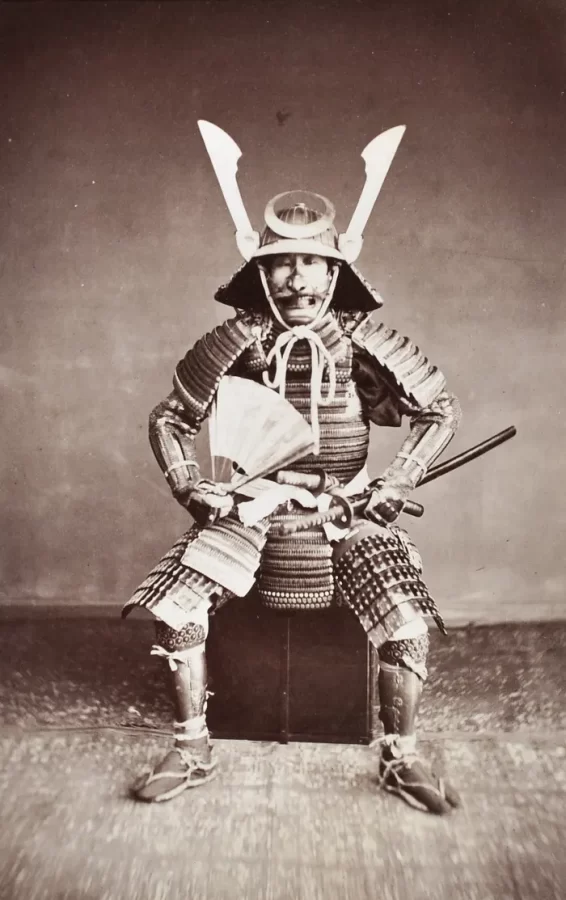The History of the Samurai
With how prevalent Japanese culture has become, it is imperative that we discuss its history as well.
When thinking of Samurai, many will likely jump to the image of armor-clad warriors who ride upon horses. However, there are numerous other depictions of the Samurai, in which their ideals contain much more tradition than individuals would likely think.
The name of Samurai originates from the word Bushi, which described the warriors that rose to power and controlled the Japanese government in the early twelfth century. The Samurai originally emerged from warrior bands-specifically from two named the Minamoto and Taira-in the Kamakura Period (1192-1333) and held extremely high values regarding military techniques and discipline (Britannica).
According to Japan Guide, the Samurai were supposed to follow the code of the Bushido, or the “way of the warrior.” This included extreme loyalty, self-discipline, and upholding respectful behavior, as the Samurai also followed the way of Zen Buddhism.
They were also expected to uphold stoicism (patience and fortitude), and if they lost or dishonored the Bushido code, they would commit Seppuku, which is a ritual suicide where the one who dishonored the code would disembowel themselves. Usually, Seppuku would be considered an honorable death (Britannica).
To further elaborate on the Bushido code, there were seven rules specified in Inazo Nitobe’s book Bishido. They were regarded as righteousness (gi), loyalty (chugi), honor (meiyo), respect (rei), honesty (sei), courage (yu), and consistency (makoto).
Within Inazo Nitobe’s book, he wrote several Nitobe regarding the values he was taught, as he had come from a Samurai family. A few statements were:
“Bushido. The sense of honor which cannot bear being looked down upon as an inferior power, —that was the strongest of motives”
“Dishonor is like a scar on a tree, which time, instead of effacing, only helps to enlarge”
“A truly brave man is ever serene; he is never taken by surprise; nothing ruffles the equanimity of his spirit. In the heat of battle he remains cool; in the midst of catastrophes he keeps level his mind. Earthquakes do not shake him, he laughs at storms.”
Just a few of these statements represent what the Samurai stood for and that they would fight until the end. There were several stories, which have been proven to be true, display this.
In one story, in the year 1600, an army stormed the Fushimi Castle of Kyoto, which was in the way of Tokugawa. The Samurai resisted for days, but the castle fell after several days of brutal attacks. The owner of the castle, Mototada, was also killed.
Thus, not wanting to surrender, all 380 of the Samurai who worked for Mototada committed Seppuku in the same room, forever staining the floors with blood. Evidence of this slaughter can be proved, as the original floorboards have since been distributed to different temples for priests to pray for the dead (Mai Ko).
Moving on, in 1192, the Minamoto and Taira clans challenged the government. Minamoto Yoritomo was the victor of the battle, and he established a military central government that was led by the Shogun. It was recorded that the Samurai held this reign for over 700 years (Japan Guide).
In the Muromachi Period, which was around 1338-1573, the Samurai created a flourishing culture. For example, under the Samurai’s influence, they created tea ceremonies and flower arrangements that continue to this day (Britannica).
Later in the Tokugawa Period (1603-1867), the Samurai were allowed to carry their usual two swords as a symbol but had to find an occupation or become a civil bureaucrat. However, during the long years of peace, the Samurai suffered due to other lifestyles succeeding their own, which led to many facing poverty despite their high social status (Britannica). A few years after, the Samurai class was abolished due to the lack of need, as many Samurai turned to skilled trades (Japan Guide).
Now, noting how the Samurai have been around for quite some time, stories of these mythical warriors have spread to other cultures. In American culture, it upholds the same beliefs, but a few items are missing. For example, there is an extremely large misconception about Samurai only being men as well as the Samurai being prepared to commit sepukku (Inside Japan).
With this said, it is important to distinguish between myth and reality, especially if referencing the culture. By doing so, it maintains a sign of respect, as it displays education as well as respect for Japan’s culture and history.
Several Samurai districts still exist to this day and have been left in pristine condition through restoration efforts. For example, tourists can visit the Kakunodate Samurai District, the Kitsuki Samurai District, the Nagamachi Samurai District, and so on to experience a bit of the culture.
There are also several museums that represent the history of the Samurai, including the Sword Museum in Tokyo, the Tokugawa Art Museum in Nagoya, and the Madea and Honda Museums in Kanazawa.
However, respecting culture and those around an individual is always a must. Thus, if someone is planning to visit, review the guidelines of traveling to Japan as well as customs to stay respectful to those who live there.
Your donation will support the student journalists of Dakota High School. Your contribution will allow us to purchase equipment and cover our annual website hosting costs.

Jade Lilly is a senior at Dakota High School. This is her first year writing for the Dakota Planet, but she has plenty of experience towards writing professional...













